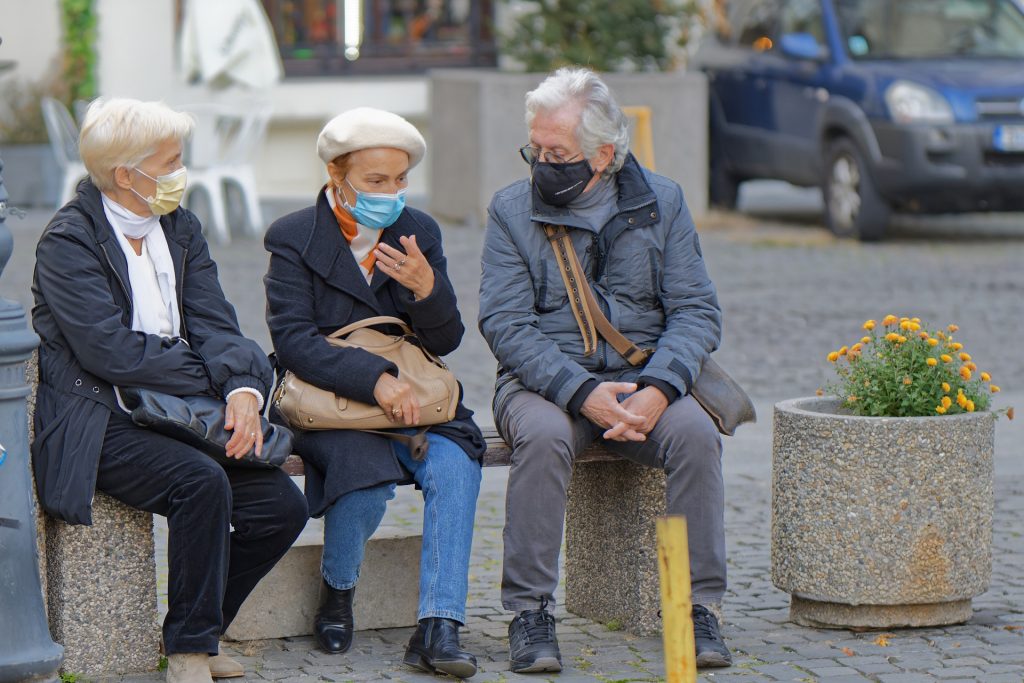05/05/2022
Researchers estimate how SARS-CoV-2 spreads depending on whether contacts are vaccinated or not
Researchers from the Department of Computer Engineering and Mathematics have developed a more accurate mathematical model to predict the impact of prophylactic measures on an infectious disease

Researchers from the Department of Computer Engineering and Mathematics have developed a more accurate mathematical model to predict the impact of prophylactic measures on an infectious disease
Ever since the outbreak of the COVID-19 pandemic, the research community has focused on attempting to understand how the SARS-CoV-2 virus functions in terms of its transmission and why transmission is faster or slower depending on the individuals involved. Faced with the challenge of understanding how infectious diseases, and the coronavirus in particular, behave and spread, Giulio Burgio, Benjamin Steinegger and Àlex Arenas, researchers from the URV’s Department of Computer Engineering and Mathematics, have been working on a mathematical model designed to estimate what impact the rate of contact rate between vaccinated and unvaccinated people can have on the spread of a virus such as COVID-19.
Contacts between people are not random: individuals tend to interact with others who have similar socio-demographic and behavioral characteristics. This phenomenon is known as homophily, which means that individuals who interact with each other have many similarities. Likewise, there is also a correlation between certain individual characteristics and attitudes to taking prophylactic measures against infectious diseases. So the protective measures taken by individuals are not always distributed homogeneously among the population, and this ultimately affects the ability to control the spread of diseases.
Of these protective measures, vaccinations have historically been crucial. However, vaccination is not adopted uniformly across the population. While in some countries access to vaccines is limited by structural factors such as the quality of health services or lack of resources, in other higher-performing countries the factors that act as a barrier to wide vaccination coverage are more individual in nature, such as age, socioeconomic status, educational level or ethnicity. Thus, the decision to vaccinate or not to vaccinate is not taken homogeneously within the same population, and this partly determines how viruses spread.
A good example of this is the recurrent outbreaks of measles in some countries with a high level of income because some groups are not vaccinated. In response to these outbreaks, several modeling studies have analyzed the impact of a homophilous approach to vaccination on the dynamics of the disease; in other words, how homophily determines vaccination and, therefore, the spread of the disease.
Due to the high quality of measles vaccines, these models assumed a vaccine efficacy of almost 100% and demonstrated that homophilic adoption always increases the final attack rate of the epidemic. In contrast, the efficacy of vaccines against influenza or SARS-CoV-2 variants is lower, between 20 and 80%, and this means that other models are needed to analyze the impact of vaccination and homophily on the spread of this virus.
In this context, URV researchers have shown that in a context of imperfect vaccination efficacy (as is the case with the pandemic) there are three different types of spread dynamics: if the rate of interaction between vaccinated and unvaccinated people increases, the final attack rate of the disease increases or decreases. This provides an additional tool for interpreting epidemiological data. Moreover, the model they have developed serves not only to predict the impact of vaccines, but also the impact of a wide range of prophylactic measures, such as masks, social distancing or digital contact tracing.
The researchers say that the model they have developed is more realistic, and that this can help to understand the impact of measures that change the structure of contacts between people. Therefore, measures can be adapted to the current state of an epidemic. They believe that if the correlation between social interactions (homophily) and health behaviors (vaccination, masks, social distancing and contact tracing) is not taken into account, the effectiveness of these measures may be overestimated.
Reference: Burgio, G., Steinegger, B. & Arenas, A. Homophily impacts the success of vaccine roll-outs. Commun Phys5, 70 (2022). https://doi.org/10.1038/s42005-022-00849-8.
